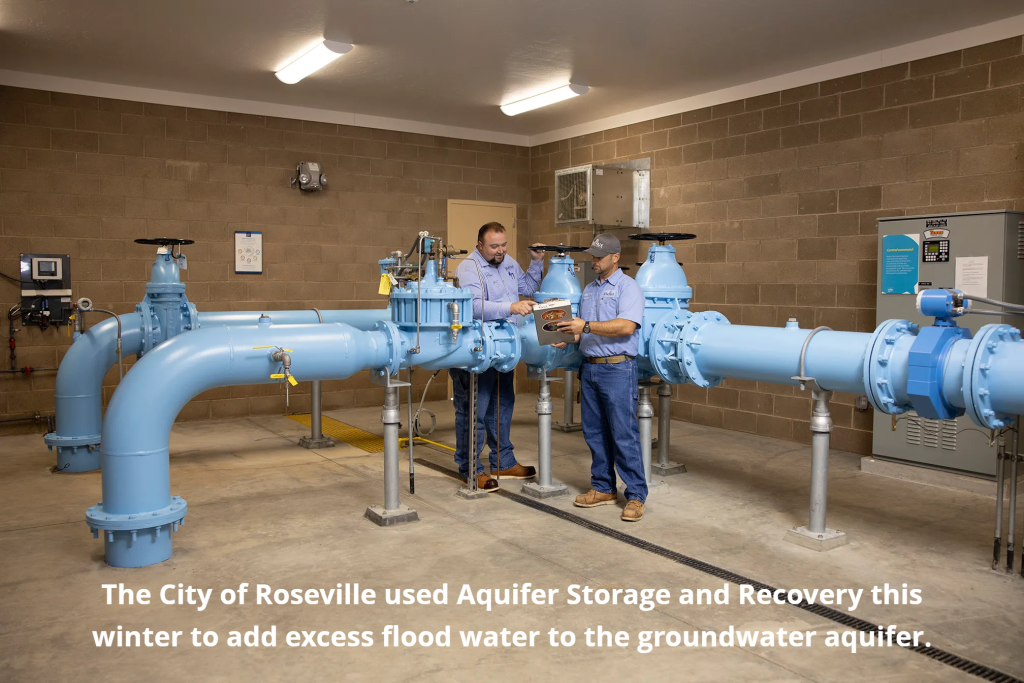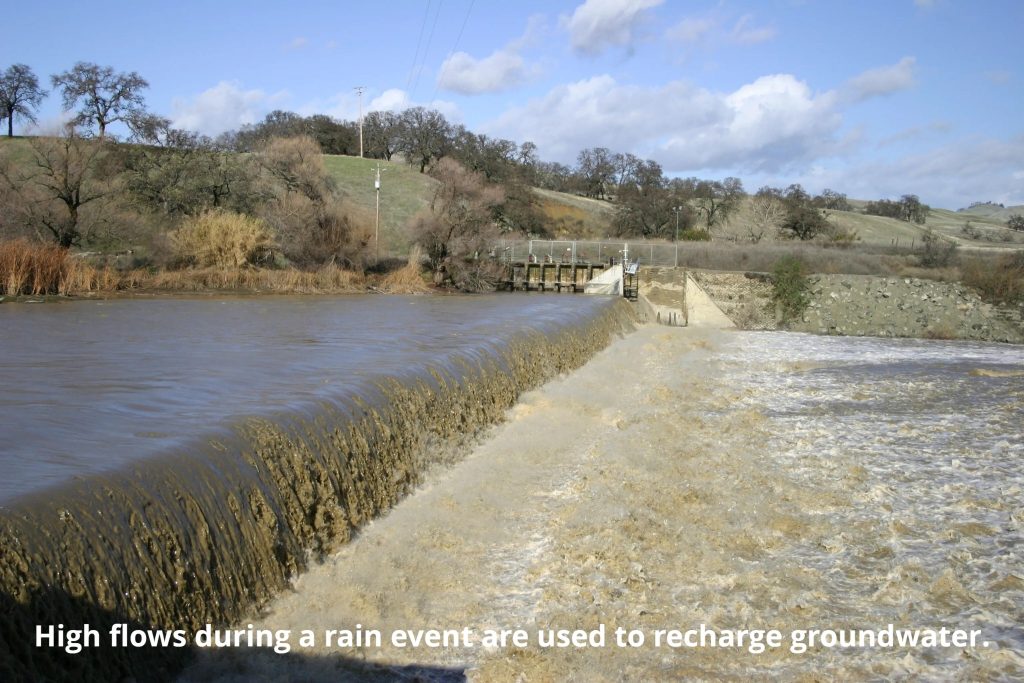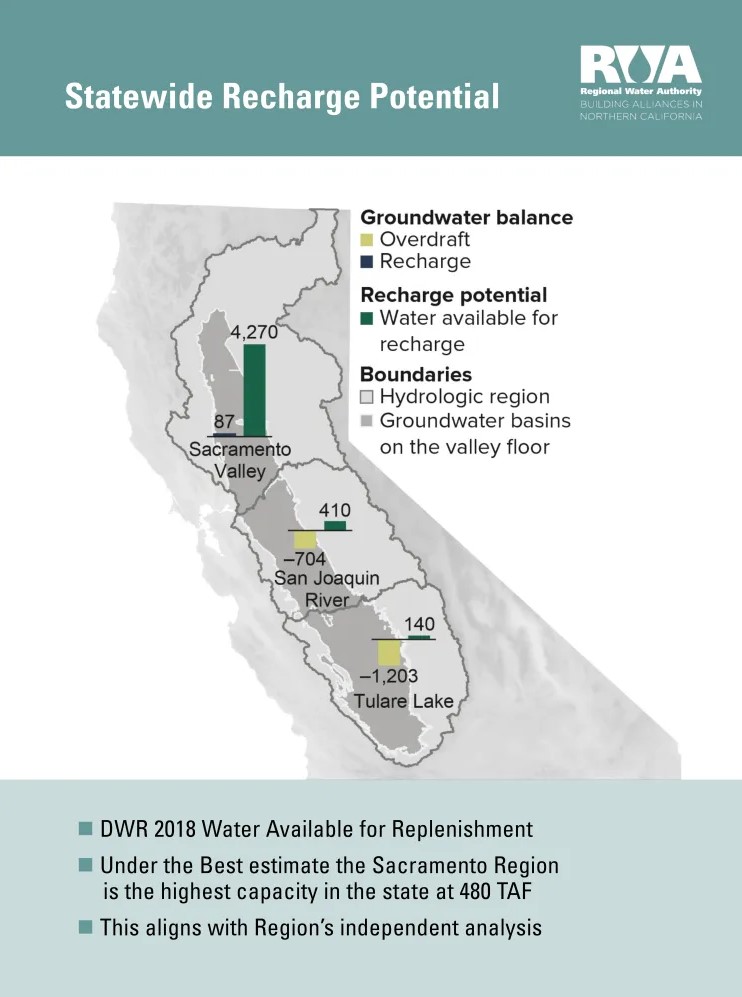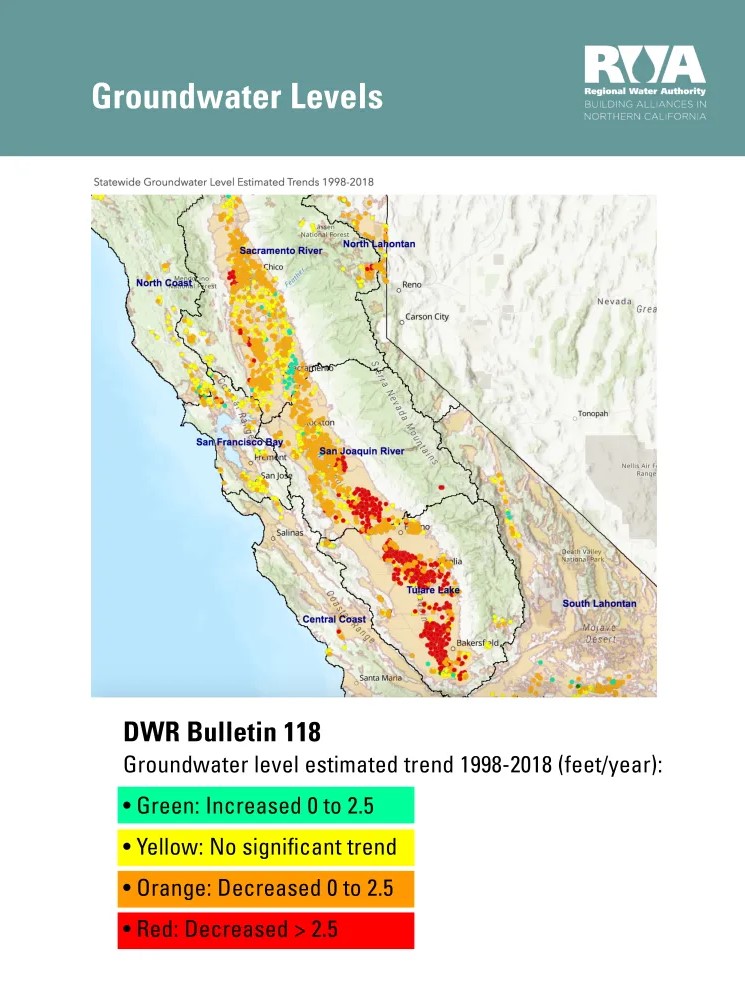Commentary Published August 9, 2022 by Maven’s Notebook
Commentary by Jim Peifer, Executive Director of the Regional Water Authority, and David Guy, President of the Northern California Water Association
As another serious drought grips California, we are again confronted with hard truths. One is this: California needs more water storage during these challenging years. This simple fact becomes clearer each year with more extreme weather—both droughts and floods. Prolonged dry periods like this are expected to become more frequent with climate change. So, we must tackle a difficult question: How to store more water in a 21st-century way with 21st-conditions?
The Sites offstream reservoir on the west-side of the Sacramento Valley is an obvious answer, but the solution also lies under our feet: groundwater. There is tremendous potential to boost the reliability of the water in our underground aquifers. For context, our groundwater basins in California hold 20 times more water than all the surface reservoirs in the state. The trick is improving our ability to move water into and out of this “green infrastructure” like Mother Nature would.
One region that holds significant promise for groundwater development is the Sacramento Valley, which includes the Sacramento metropolitan region and areas north in the Central Valley. There, aquifers have been generally sustainable for the past decade and are ready to serve as our 21st-century storage solution for addressing not only the prolonged dry periods but also the more intense wet bursts projected to come with climate change. In fact, according to a 2018 study by the California Department of Water Resources, 45 percent of all the water available for recharge in California exists in the Sacramento Valley.

Importantly, there are several areas that have been successfully recharging groundwater for decades or actively exploring new opportunities. We know this works—even during a period of “megadrought”—because it has been tested for decades. Moreover, there is extensive opportunity to expand on this proven success.
Aquifers in the Sacramento metropolitan area, for example, hold unique recharge potential–even during drought—in part because the region has access to surface water supplies from vibrant rivers flowing from the northern Sierra Nevada, where the bulk of California’s snowmelt originates. This winter, local water providers added up to 1,000 acre-feet of excess flood water per week to our groundwater aquifer—enough water to serve 25,000 households for a year. We call this our Water Bank.
Across the river in Yolo County, the Yolo County Flood Control and Water Conservation District has been recharging groundwater when physically possible since the 2014-15 drought. Here, the district uses high flows from Cache Creek to recharge its groundwater resources, so farmers can have more reliable groundwater supplies when surface water is not available, like we are seeing in 2022.
To the north, on the west-side of the Sacramento Valley, there are areas, such as Arbuckle and Orland, where groundwater levels are declining with the lack of surface water over the past decade. These areas have great promise to capture water when flowing through creeks in the Coast Range, as well as high flows on the Sacramento River.

All these projects would benefit from state and federal assistance through financial investments and coordinating and expediting the regulatory process and the ability to capture water when it is available for use at a later time when it is needed.
By investing more than $100 million over the past decade, capital aquifers now have the ability to deliver and recharge 60,000 acre-feet of groundwater annually. That’s enough water to serve 120,000 average homes for a year. There’s tremendous potential to increase these numbers. We have shovel-ready projects in place to sustainably increase groundwater deliveries by another 30,000 acre-feet, enough to serve an additional 60,000 homes annually. This requires an additional $300 million.
Investing in groundwater storage would increase our ability to shift more demand to groundwater during drought. This could free up surface water behind existing dams to serve other regions of the state, as well as sustain important aquatic and terrestrial habitat and endangered fish.
Thankfully, the Governor and Legislature have agreed on a state budget that includes money for climate-resilient projects like groundwater recharge. However, the exact amount is still under negotiation and expected to come up for a vote in August. In Washington DC, the 2021 bi-partisan Infrastructure Investment and Jobs Act prioritized groundwater recharge and storage, with funding now needed to support these efforts.
Now is the time for both state and federal leaders to make significant investments in recharging our groundwater aquifers—the reservoir under our feet—and to create a 21st century water system California to ease us through the dry times stretching before us.
Continue reading the full commentary on Maven’s Notebook here.
Jim Peifer is Executive Director of the Regional Water Authority, representing 21 water providers serving 2 million people in the Sacramento region. David Guy is President of the Northern California Water Association, which represents water districts, water companies, small towns, rural communities and landowners that beneficially use both surface and groundwater resources in the Sacramento Valley.






